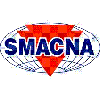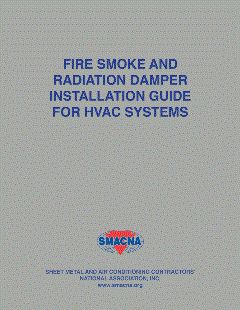TESTING
Life safety dampers have evolved from black iron, single-blade, gravity operated products to the actuated and dynamically rated multi-blade products commonly applied today. During that evolution, the test criteria used to rate life safety dampers has become much more stringent. In addition to the fire endurance and hose stream test that fire dampers have always been required to pass, the 7th edition of UL 555, and the 4th edition of UL 555S, have introduced or increased the pass/fail criteria for several other test requirements.• Non-actuated fire dampers are required to complete 250 full open/closed cycles.
• Actuated dampers are required to complete 20,000 open/closed cycles.These cycle tests are conducted prior to the heated-air operation tests, the dynamic closure tests, and the leakage tests.
• Minimum airflow ratings of 2,000 fpm through the fully open damper and 4 inches of static pressure across the fully closed damper have also been established to eliminate “marginal” products from being installed.
• In addition, factors of safety of 400 fpm and 0.5 inch static pressure are used during the testing. A damper with the minimum 2,000 fpm and 4 inches static pressure rating is tested at 2,400 fpm and 4.5 inches static pressure.
These changes to UL’s test standards have been implemented to keep pace with the changes in modern HVAC systems.
INSTALLATION
Even with these stringent test requirements and improved manufacturing processes, the proper performance of life safety dampers in the field (as is true with any life safety product) requires the damper manufacturer’s installation instructions to be followed. UL requires damper manufacturers to provide installation instructions in each shipping container. Most manufacturers also make their instructions available online. Although installation requirements vary by damper manufacturer and damper model, the following items are generally covered in the installation instructions - the wall/floor framing details, clearance requirements between the damper and the wall/floor opening, duct-to-damper sleeve connections, and how to secure the damper to the wall/floor opening.INSPECTION AND MAINTENANCE
As with any mechanical device, proper maintenance is necessary to ensure that dampers will operate as designed. Inspection and maintenance requirements are defined by damper manufacturers, actuator manufacturers, and by the National Fire Protection Association (NFPA).The most important step in making certain that a life safety damper will operate properly is during the building commissioning process. Chapter 19 of NFPA Standard 80, Fire Doors and Other Opening Protectives, states that “after the installation of the life safety damper is completed, an operational test shall be conducted.” The standard goes on to state that for combination fire and smoke dampers “the operational test shall be conducted under non-fire HVAC conditions as well as static flow conditions.” This also includes fire dampers. The 2006 International Building Code references NFPA for maintenance of life safety dampers.
After the initial commissioning process, it’s essential to implement a periodic maintenance program for a building’s life safety dampers. Chapter 19 of NFPA 80 including fire dampers states, “Each damper shall be tested and inspected one year after installation. The test and inspection frequency shall then be every four years, except in hospitals, where the frequency shall be every six years.” Additional testing and documenting criteria for smoke and combination fire and smoke dampers are specified in NFPA Standard 105, Installation of Smoke Door Assemblies and Other Opening Protectives. This standard identifies almost identical verbiage as NFPA 80.
The damper industry has continued to evolve and provide the safest, most effective products. Products designed to be easily installed and with proper maintenance provide a long service life while enhancing the compartmentation effectiveness. Keeping up with routine maintenance and documentation allows the system to perform and function as designed and intended.
Reprinted with permission from the Greenheck white paper “Life Safety Damper Maintenance and Inspection.” For more information, visit www.greenheck.com.
Publication date:08/09/2010









